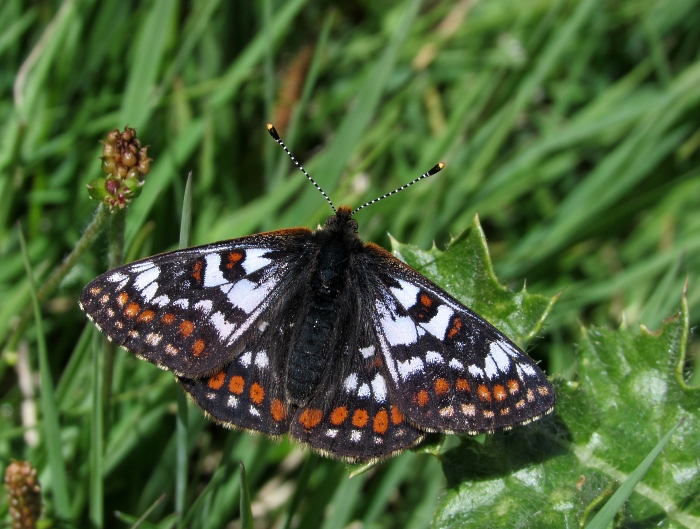
Male, Switzerland, July 2011
Euphydryas (Hypodryas) cynthia
Refresh page if pictures don't load fully:












Male, Switzerland, July 2006

Male, Switzerland, July 2006

Female, Switzerland, July 2006

Male, Switzerland, July 1988 (my first ever Cynthia's
fritillary!)

Caterpillar, Switzerland, July 2013

Caterpillar, Switzerland, July 2013

The habitat - June 2017

Distribution
This stunning fritillary is
found at
altitude on most of the high mountains in the Alps, as well as (a
little bizarrely) in Bulgaria. Males hilltop, and the best way to look
for them in a likely region is to climb up flowery gullies to the top,
where if you are lucky you will see males vigourously defending
territories from flower-heads - almost invariably yellow flowers in my
experience! They also like to take nectar and I have seen several males
feeding peacefully together on thyme. When they get onto their
favourite yellow flowers, however, they do not tolerate rivals anywhere
near!
Males cannot be mistaken for
any other
butterfly. Females resemble marsh fritillaries, which often fly in the
same places. However, at these altitudes, marsh fritillaries are
relatively small and rather greyish, while Cynthia's fritillaries are
large, open and orangey. They usually, but not invariably, have dark
post-discal spots on the hindwing, like marsh fritillaries. Although
they may occasionally be two-tone (more commonly just orange), they
never show the clear, bright bands of marsh fritillary. I don't think
I've ever been in any doubt in the field.
The foodplants are alpine plantain and mountain violet. The
caterpillars hibernate twice, so the full life-cycle covers two years.
When the caterpillars are full grown they are very distinctive, in
black and yellow livery. The adults butterflies emerge in late June or
early July, depending on when the snows melt, and are sometimes still
on the wing in September.